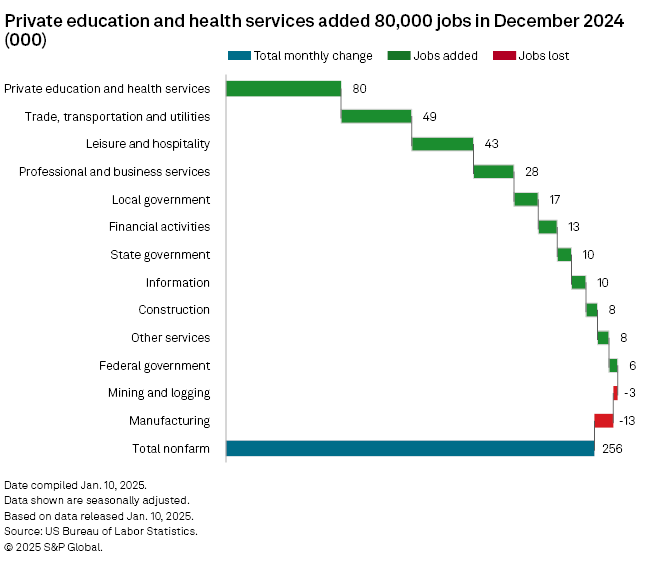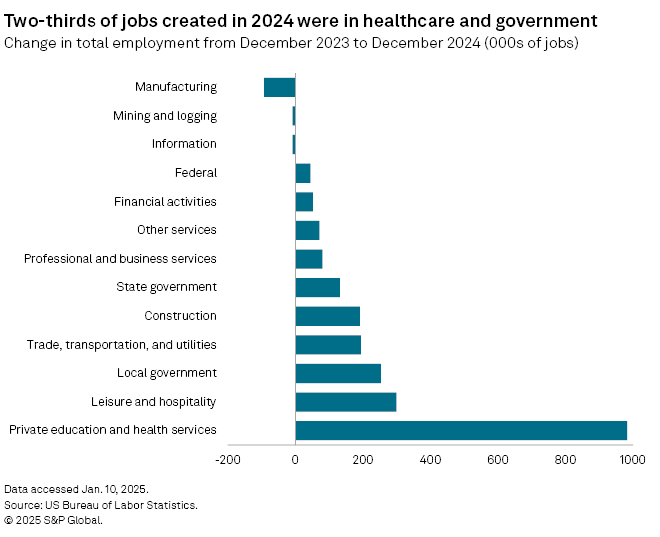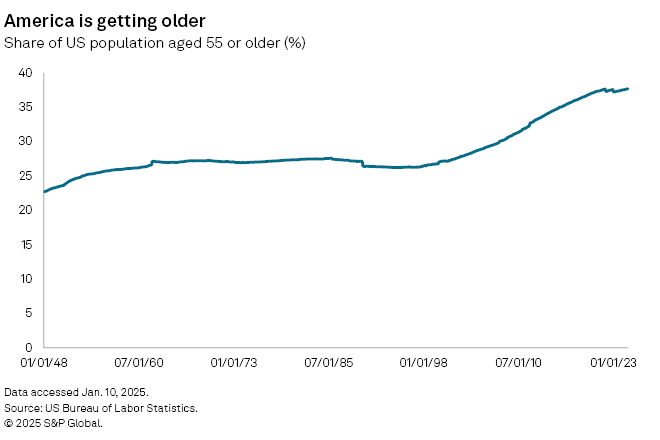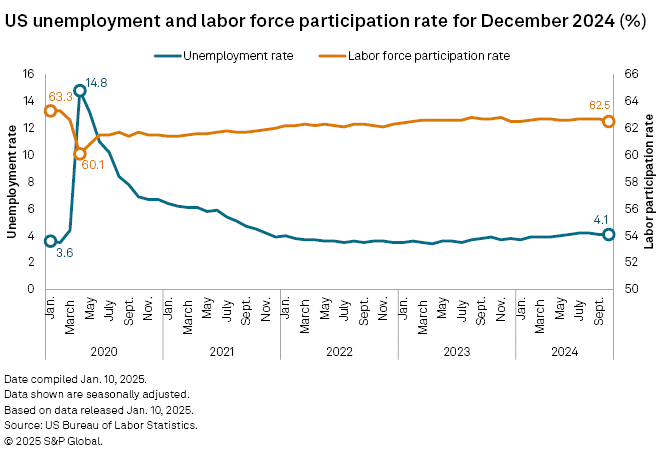The US labor market expanded by 256,000 jobs in December and by nearly 2.2 million jobs throughout 2024, but that growth was concentrated in just a handful of sectors.
Healthcare jobs reported particularly brisk growth, and the demand for those workers could be obscuring an underlying weakness in the broader labor market.
In December 2024, 80,000 jobs were added in private education and health services, about 31% of all jobs for the month, the US Bureau of Labor Statistics reported. Of the 2.2 million jobs added since December 2023, 982,000, or about 45%, were in this largely healthcare-focused sector. Going further, a bit more than 1.41 million jobs were created in healthcare or government, accounting for about 65% of all the job growth throughout 2024.

The concentration of employment growth in these secular sectors, rather than cyclical sectors such as construction or manufacturing, suggests that the jobs market may not be robust in spite of relatively low unemployment and ongoing job growth.

"This is a sign that the labor market is not as strong as the headline numbers suggest," said Sarah House, a senior economist with Wells Fargo.
Healthcare employment has risen as the US population has grown older and more in need of care. Americans ages 55 and older made up nearly 38% of the country's overall population in December 2024, compared to less than 29% just 20 years ago.

"It may be that the aging population is creating more demand for these roles and the surge in property and equity market wealth is giving more people the financial resources to be able to afford help," said James Knightley, chief international economist with ING. "Indeed, this growing community care demand rather than institutional healthcare means more people are needed."
Overall US unemployment was 4.1% in December 2024, where it has roughly been since rising to 4% in May 2024. Unemployment in education and health services was at 2.7%, by comparison, down from 3.7% in August 2024.

The strength of the healthcare sector may be "masking weakness" in other parts of the economy, said David Russell, global head of market strategy at TradeStation.
"This has made the monthly jobs numbers look stronger than might would otherwise be the case," Russell said. "Other parts of the economy that are more sensitive to the business cycle, like manufacturing and construction, have stagnated for months."
Manufacturing lost 93,000 jobs over the course of 2024, the most of any sector, while construction jobs growth was cut in about half between 2023 to 2024.
This poses a challenge from the Federal Reserve, which is likely using the relative strength of the labor market as a key argument against further interest rate cuts.
Russell with TradeStation called this a potential "worst of both worlds" scenario, as strength in healthcare jobs gives the Fed less reason to lower rates, but also conceals the struggles of the cyclical portions of the economy.
"That, in turn, weighs on sectors like financials, industrials and risk appetite in general," Russell said.



